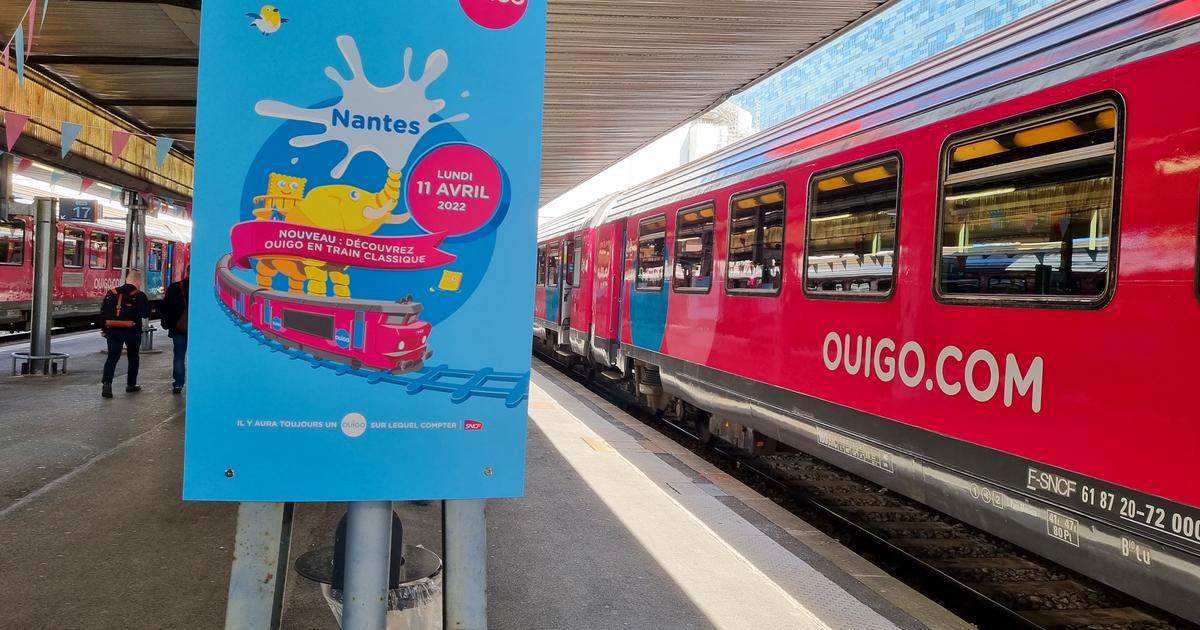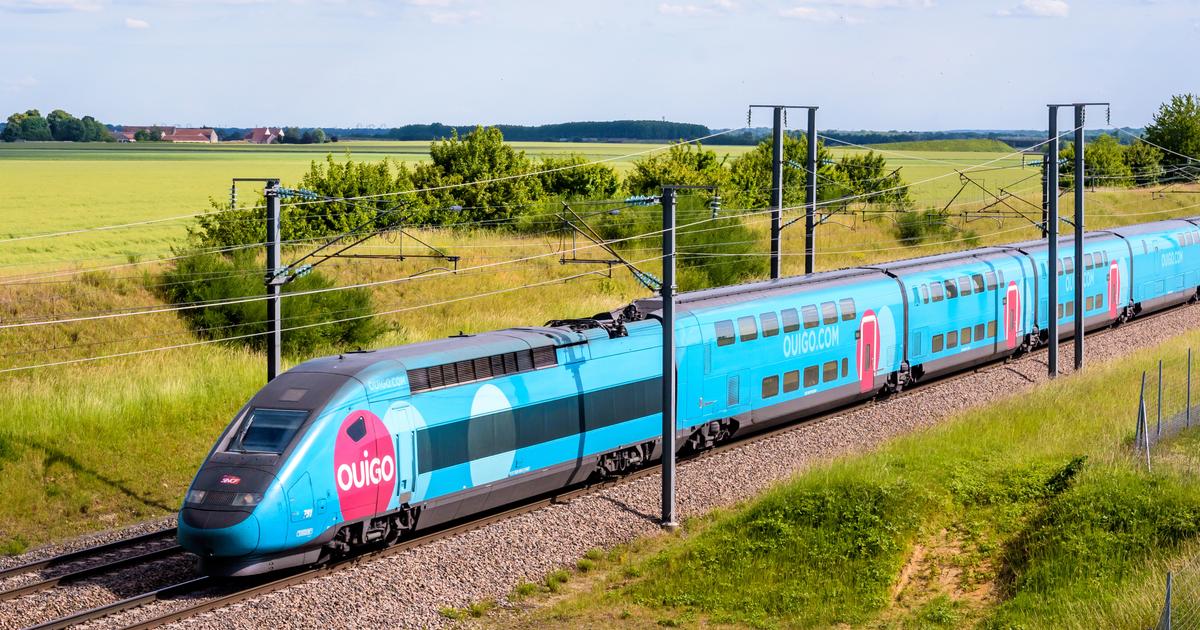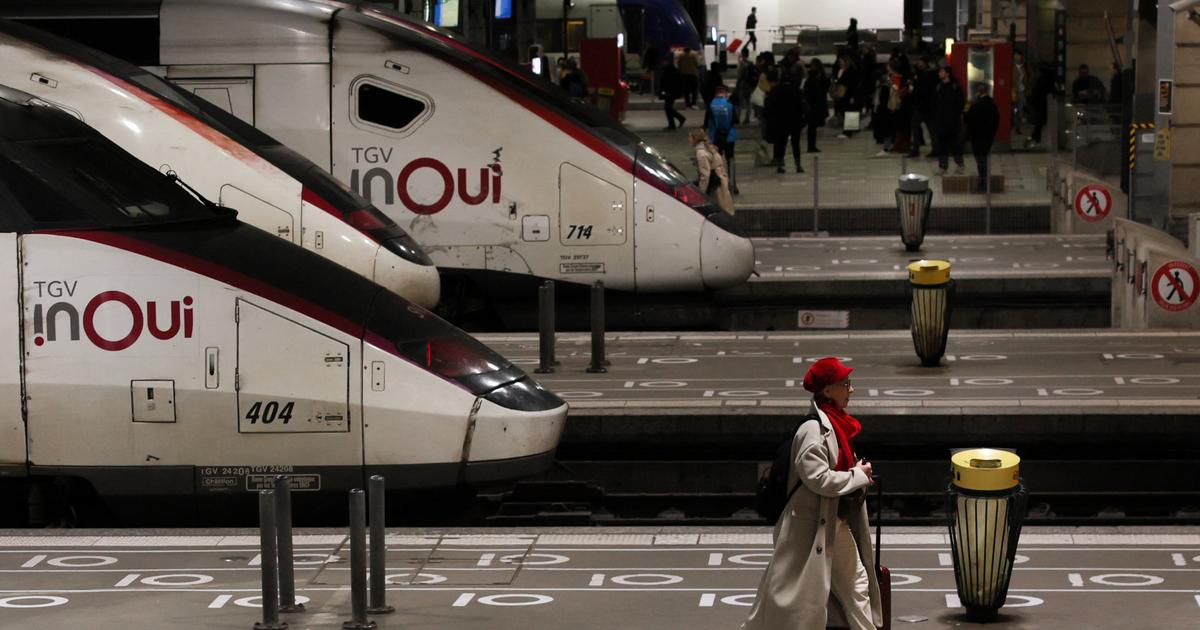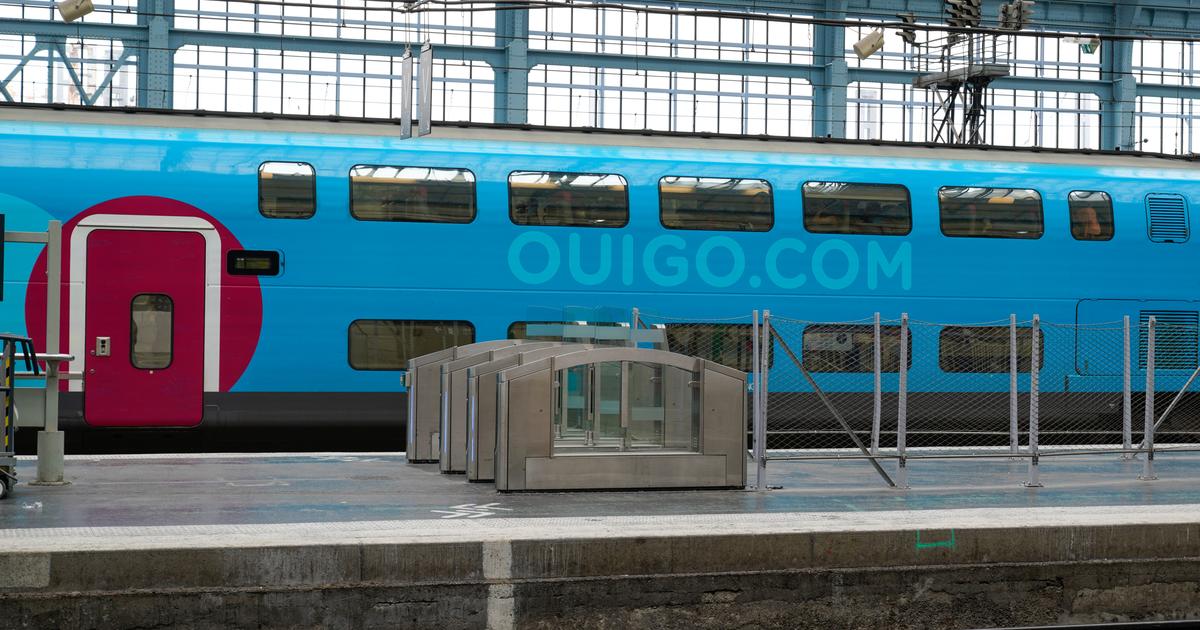To make new with old, it is the bet which launches the SNCF with its new offer “Ouigo classic train”.
Inaugurated this Monday, April 11, it allows travel between Paris, Lyon and Nantes, while serving a dozen intermediate stations such as Le Mans, Angers, Dijon or Chalon-sur-Saône.
If the trip lasts twice as long, it is also less expensive: the prices, fixed, are established between 10 and 30 euros, including at the last minute.
The offer is ultimately very comparable to that of the 100% Eco Intercités which circulated until 2019 between Paris and Grenoble, Bordeaux and Strasbourg.
The principle was the same: to offer a slower but less expensive alternative to the TGV by taking the classic routes with less expensive tolls.
This service is therefore reborn under another name and in the form of a private subsidiary.
A clever legal arrangement which the SNCF is accustomed to, which is denounced by several railway unions.
Several dozen of them have also delayed the departure of our train by one hour by entering the tracks at Paris-Austerlitz station.
Comfort, on-board service, explanation of pricing… To assess this new offer, we sat down in the
Read alsoOuigo: the (not chic) underside of the “slow train”
Comfort: 8/10
The Corail trains assigned to the new Ouigo have not been renovated.
Jean-Marc De Jaeger / Le Figaro
During a presentation of the trains to the press, at the beginning of March, the SNCF had only shown the outside of the train and their new candy pink coating, but impossible to take a look inside.
Why so much mystery?
If it is true that the Corail trains (contraction of "comfort on rails"), put into service from 1975, sport an old-fashioned appearance that one can be ashamed to present as a new product, it must be recognized that their seats are certainly the most comfortable that still exist on the French network.
In any case, you feel much more comfortable there than in other Ouigos where, as in airplanes, the space is optimized to the maximum.
Apart from the windows (without curtains or blinds!), nothing has been renovated.
Only a few Ouigo-colored stickers have been added here and there.
A detail that may disappoint connected travellers: there is no Wi-Fi or electrical outlets.
Nevertheless, the whole train is not homogeneous, some cars are a little better equipped than others.
With a little luck, you will be able to find a socket depending on the car where you are placed.
Read alsoParis-Lyon: we tested the difference between SNCF and Trenitalia
The service: 6/10
As you would expect with a low cost offering, service is kept to a minimum.
While the high-speed Ouigos do not have a bar car, the “slow Ouigos” offer a mobile snacking service.
Rather appreciable when the journey lasts four hours, but do not hope to appease a great hunger: only crisps, chocolate bars and bottles of water or soda are offered... For a complete meal, we will make arrangements.
Travelers can take their bike with them (€5 for a dismantled bike in a cover, €10 for an undismantled bike), which is not possible in the high-speed Ouigo.
In addition to the one included in the ticket, baggage costs €5 (free option throughout 2022).
Positive point: boarding is done up to five minutes before the departure of the train, while customers of Ouigo high speed must arrive thirty minutes in advance.
Read alsoTraveling a child alone by train, instructions for use
The route and times: 6/10
Ouigo Classic train serves 14 destinations on the Paris-Lyon and Paris-Nantes axes.
SNCF Travelers
As its name suggests, the new Ouigo travels at conventional speed, meaning at 160 km/h maximum.
While a high-speed Ouigo takes two hours to connect Paris to the center of Lyon and Nantes, “slow Ouigos” get there in around 4.5 hours.
In the capital, departures are from secondary stations: Bercy station for trains to Lyon (one daily round trip), Paris-Austerlitz station for those to Nantes (two daily round trips, one via Blois , the other via Le Mans).
Another particularity, the trains serve several stations in the Paris suburbs.
During our trip, half of the travelers boarded in the three Ile-de-France stations served (Juvisy, Massy-Palaiseau and Versailles Chantiers).
Proof, no doubt, that this train meets a demand from passengers living in the south of Paris.
The price: 8/10
The trains are made up of eight Corail cars, all repainted in fuchsia pink.
Jean-Marc De Jaeger / Le Figaro
Finally an ounce of simplicity in SNCF pricing!
On the new Ouigos, prices are not set according to demand and the occupancy rate (
yield management
), as is the case with other trains (except TER).
No risk, therefore, of seeing the price soar as the start approaches.
All passengers on the same train are guaranteed to pay the same fare, between €10 and €30 (fixed price of €5 for children under 12), regardless of when the reservation is made, knowing that the sales open 45 days before departure.
The exchange costs 10 € while the cancellation of the ticket is not possible.
This fixed price system could appeal to travelers accustomed to leaving at the last minute.
The offer shows its real interest in periods of major departures (school holidays, etc.), during which a Paris-Lyon or a Paris-Nantes can easily sell for a hundred euros one way if you do not have no Advantage card.
Good to know if you plan to travel to one of these destinations during the long weekends of Easter and Pentecost.
With this offer, the SNCF seeks more to compete with the road than to compete itself.
Target ?
Motorists and regulars of carpooling and long-distance coaches.
On the day of our departure, most carpooling between Paris and Nantes was offered at €25, with one advantage, that of the flexibility of the point of departure and arrival.
As for coaches, Blablabus and Flixbus offered seats at €20 for a journey longer than one hour (i.e. 5 hours 30 minutes).
Our Ouigo was therefore both the cheapest (€19) and fastest (4h18) way to reach Nantes.
Read alsoTrain or plane: which transport to choose for your trips to Europe?
Final mark: 7/10 for the Ouigo classic train
The SNCF assumes its two-speed travel model.
The "Slow Ouigo" wants to attract customers who have time but little means.
Whatever people say, it's a good way to make the train accessible to all budgets.
It remains to be seen whether travelers accustomed to high speed will be ready to double their journey time and sacrifice half a day to save a few euros... Some days, it is more interesting to borrow a high-speed Ouigo, offered at €19 to Nantes and Lyon.
On the Paris-Lyon, travelers can also count on Trenitalia, SNCF's new competitor, which offers this journey from €23.
SNCF hopes to reach 1.2 million passengers within two years with this new offer designed above all as an experiment.
ON VIDEO – In Spain, the SNCF launches a top-of-the-range Ouigo with first class and bar









